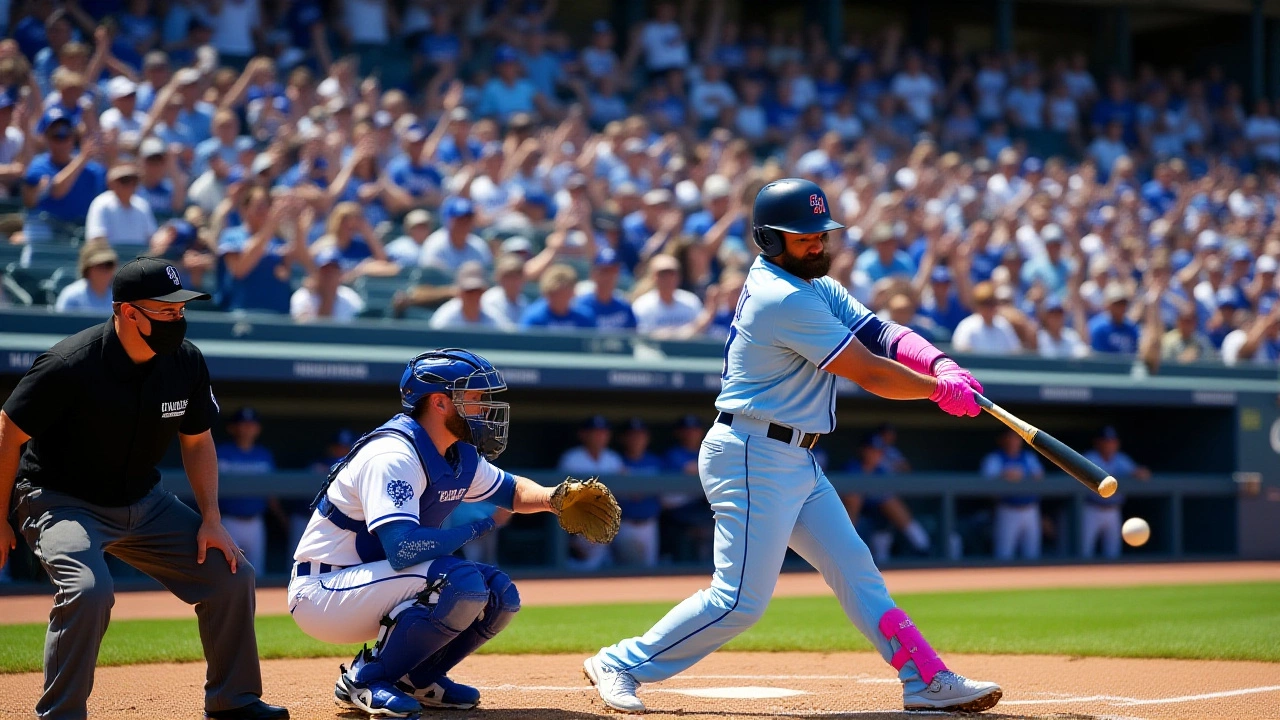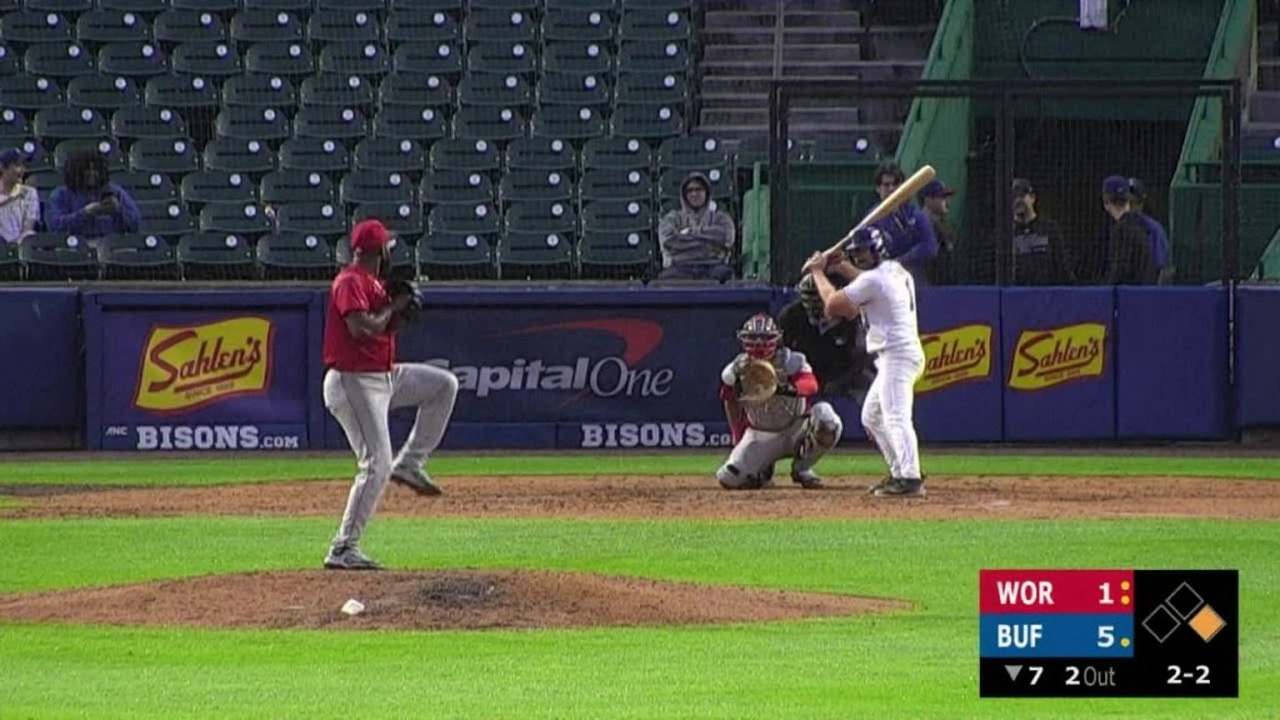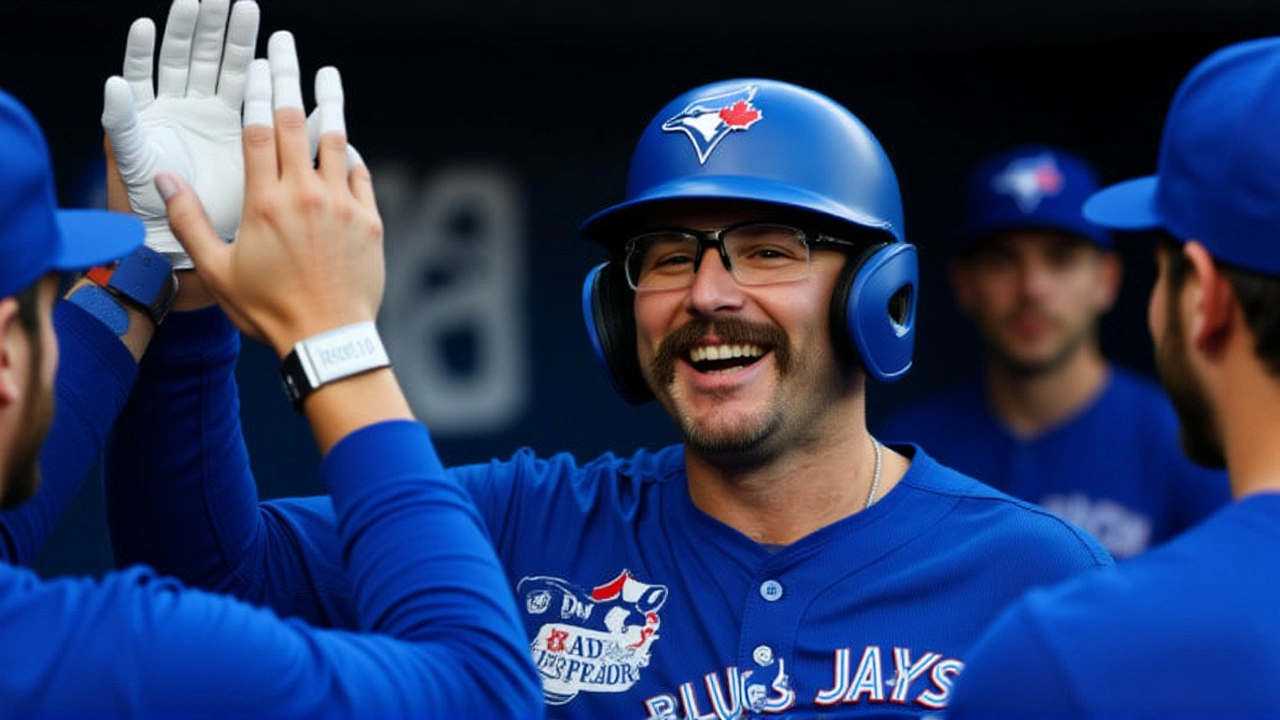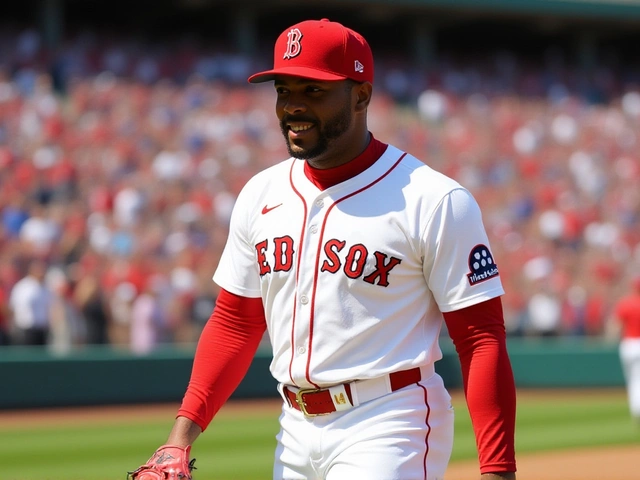Schneider’s Leadoff Homer Powers Blue Jays to Brink of World Series Title
On a crisp October night at Dodger Stadium, Davis Schneider didn’t just swing at the first pitch—he changed the trajectory of a franchise. The 25-year-old Blue Jays outfielder launched a leadoff homer off Blake Snell in Game 5 of the 2025 World SeriesLos Angeles, igniting a 2-0 first-inning explosion that stunned the Los Angeles Dodgers and put the Toronto Blue Jays one win away from their first championship since 1993. It wasn’t just a home run. It was a statement.
The Moment That Shifted the Series
When Schneider connected on Snell’s 96-mph fastball, the crowd of 53,000 fell silent. No one expected it—not the Dodgers, not even the Blue Jays bench. But Schneider had been waiting for this moment. His regular season stats—.234 AVG, .797 OPS, 11 homers in just 188 at-bats—didn’t scream star. Yet here he was, on baseball’s biggest stage, delivering the kind of clutch hit that redefines legacies. And he wasn’t done. One pitch later, Vladimir Guerrero Jr. launched his own shot into the left-field pavilion, making it back-to-back leadoff-to-second-inning homers. It was the first time in World Series history that two hitters did that on the very first two pitches of a game.
Behind the Scenes: A Rookie’s Breakout
The real surprise? The man on the mound. Trey Yesavage, a 22-year-old rookie from Jacksonville, Florida, had never started a postseason game before Game 5. Yet manager John Schneider trusted him with the keys to the car—and Yesavage delivered seven shutout innings, allowing just three hits and striking out nine. After the game, Schneider called him "the quietest assassin I’ve ever managed." Yesavage’s fastball, clocked at 98 mph with late tail, neutralized the Dodgers’ power hitters, including Shi Otani, who had dominated Toronto in Game 4. The Blue Jays’ strategy? Pitch to contact early, then let the defense work. It worked. Four straight wins against elite pitching. No team had done that in a single postseason since the 2004 Red Sox.
Guerrero Jr. on the Edge of History
While Schneider stole headlines, Guerrero Jr. quietly crept toward a record. With his Game 5 homer, he reached 27 postseason hits—just two shy of Randy A. Rose’s all-time single-postseason mark set in 1995. The 26-year-old slugger, born in Montreal, has been the engine of Toronto’s offense since Game 1. He’s hit in 11 straight postseason games. His 10th-inning blast in Game 4 against Otani? The difference-maker. Now, with Game 6 set for Rogers Centre on October 31, the entire city is buzzing. Fans have started wearing "27+1" shirts. The scoreboard at the stadium now flashes his hit total after every inning.

Why Schneider’s Return Matters
Here’s the twist: Davis Schneider wasn’t even a regular starter in September. He spent 17 days on the injured list with a strained oblique, returning just before the ALCS. His postseason stats before Game 5? 0-for-12. But his on-base percentage in the regular season—.361—told a different story. He didn’t need to hit .300. He needed to get on base, and he did. His patience at the plate, his ability to work deep counts, made him the perfect leadoff hitter for a team built on patience and power. "He’s not a flash guy," said Lauren Shehadi in her post-game interview. "He’s the guy who makes you pay for pitching around him. And tonight, they didn’t pitch around him. They paid.""
What Comes Next: Game 6 and the Legacy
Game 6 on October 31 at Rogers Centre isn’t just a game—it’s a coronation waiting to happen. The Blue Jays haven’t won a World Series in 32 years. The Dodgers, meanwhile, are trying to avoid becoming the first team since the 2019 Nationals to lose a World Series after leading 3-2. If Toronto wins, they’ll be the first Canadian team to win the title since the 1993 Blue Jays. If they lose, the series goes back to LA, and the pressure shifts entirely. But for now, the narrative is clear: this team isn’t just playing for a ring. They’re playing for redemption, for history, and for a city that hasn’t felt this electric since Joe Carter’s swing in ’93.

The Bigger Picture: A New Generation Rises
The Blue Jays’ 2025 run isn’t just about veterans like Guerrero Jr. or Bo Bichette. It’s about the rise of a new core: Yesavage, Schneider, and 21-year-old catcher Mateo Torres, who’s hit .318 in the postseason. This isn’t a team built on big-money signings. It’s built on development, scouting, and the kind of grit you can’t buy. The Dodgers spent $420 million on free agents this offseason. The Blue Jays? They spent $18 million on international prospects and trusted their farm system. And now? They’re one win from glory.
Frequently Asked Questions
How did Davis Schneider’s 2025 regular season stats compare to his postseason performance?
Schneider’s regular season was solid but unspectacular: .234 AVG, .797 OPS, 11 homers in 188 at-bats. But in the postseason, his patience paid off—he reached base in 12 of his 19 plate appearances before Game 5, drawing 7 walks. His leadoff homer was his first postseason hit, proving that his value wasn’t in raw power, but in timing and approach. He’s become the perfect table-setter for Guerrero Jr. and Bichette.
Why is Trey Yesavage considered such a surprise for the Blue Jays?
Yesavage was a 12th-round pick in 2023 and spent most of 2024 in Triple-A. He didn’t make the Opening Day roster in 2025. But after a midseason call-up, he posted a 2.88 ERA in 17 relief appearances. Manager John Schneider moved him into the rotation for Game 5 after an injury to José Berríos. Yesavage’s ability to throw strikes under pressure—especially against elite lineups—has made him the most unexpected hero of the series.
What makes the Blue Jays’ strategy against elite pitchers so effective?
Toronto’s hitters have mastered the art of working deep counts. In the 2025 postseason, they’ve forced pitchers to throw 4.8 pitches per plate appearance—the highest in MLB history. Against Snell, they took 10 of the first 12 pitches, forcing him into mistakes. Their coaches drilled them on recognizing spin early, especially against sliders and curveballs. It’s not about swinging harder—it’s about waiting longer.
How close is Vladimir Guerrero Jr. to breaking Randy Rose’s postseason hit record?
Guerrero Jr. has 27 postseason hits through Game 5, two shy of Randy A. Rose’s record of 29 set in 1995. Rose achieved it over 22 games; Guerrero Jr. has done it in 15. If he gets two hits in Game 6, he’ll tie it. If he gets three, he’ll break it. Either way, he’s on pace to become the first player in MLB history to record 30 postseason hits in fewer than 16 games.
What’s at stake for the Toronto Blue Jays organization if they win Game 6?
A win would end a 32-year championship drought and make the Blue Jays the first Canadian team to win since 1993. It would validate their investment in player development over big-name free agents. It could also trigger a surge in ticket sales, merchandise, and international broadcasting deals. More importantly, it would cement this team as the most impactful Blue Jays roster since the back-to-back titles of ’92 and ’93.
Is this the most surprising World Series run in recent history?
It’s up there. The Blue Jays weren’t even favored to win the AL East. They finished third in their division. No one picked them to beat the Yankees in the ALDS, let alone the Guardians in the ALCS. Now, they’re one win from a title with a rookie pitcher, a comeback hitter, and a core that barely made the playoffs last year. The only comparable run? The 2014 Royals—underdogs who won it all with speed, defense, and grit. This Blue Jays team? They’re doing it with patience, power, and poise.





